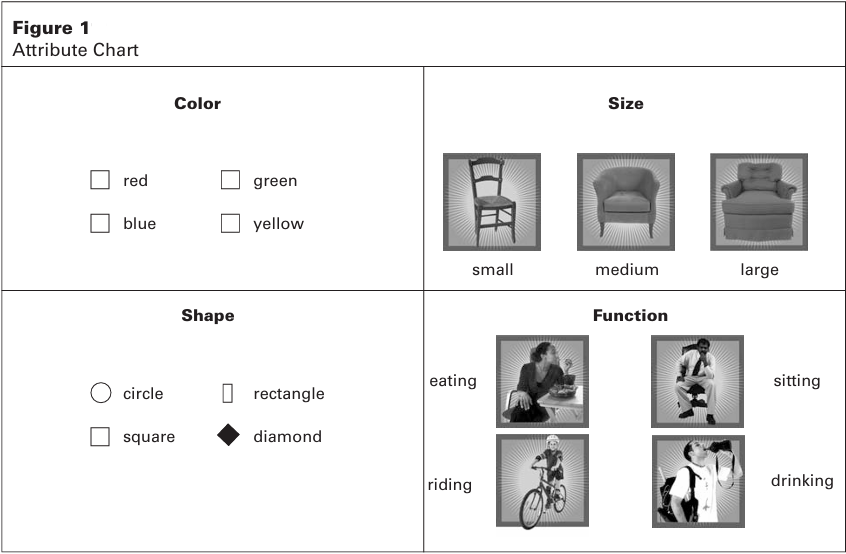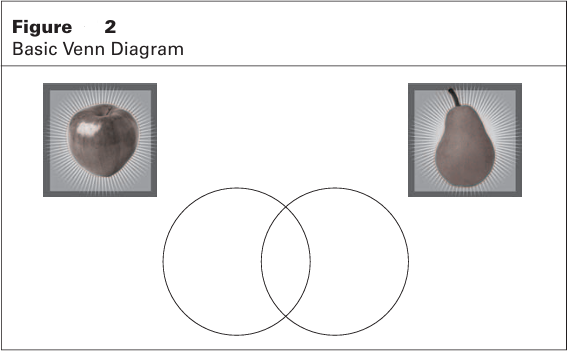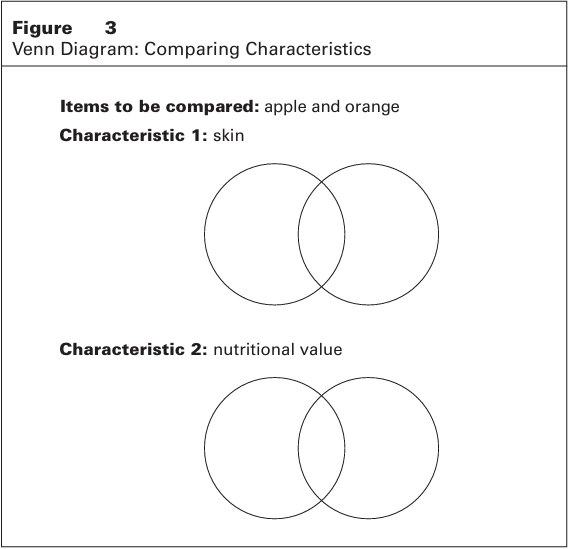
Adapting Identification of Similarities and Differences to the Stages of Language Acquisition
 المؤلف:
Jane D. Hill Kathleen M. Flynn
المؤلف:
Jane D. Hill Kathleen M. Flynn
 المصدر:
Classroom Instruction that works with English Language Learners
المصدر:
Classroom Instruction that works with English Language Learners
 الجزء والصفحة:
P104-C11
الجزء والصفحة:
P104-C11
 2025-09-18
2025-09-18
 337
337
Adapting Identification of Similarities and Differences to the Stages of Language Acquisition
Identifying similarities and differences has long been used in ESL classes to build basic vocabulary in different categories, including color words and words used to describe size (adjectives), shape words (nouns), and words for functions (verbs). This is done with an attribute chart (see Figure 1). The teacher gives a small group of students two objects, such as an apple and an orange, and then directs the students to the color box.

Preproduction
Students can point to the red color swatch when holding the apple and repeat the word “red.”
Early Production
Students can complete a sentence starter with a one-word response: “The apple and the orange are the same because they are both . . . .”
Speech Emergence
Students can complete a sentence starter with a phrase or short sentence: “The apple and the orange are different because . . . .”
Intermediate and Advanced Fluency
Students will not need the sentence starters, but their responses will need some shaping. You should encourage them to “sound more like a book” by using words other than “same” and “different.”
The attribute chart can be gradually increased to include more characteristics, such as the composition of items (what they are made of) and parts of the items (e.g., eraser and lead for a pencil). Plan for oral language development as students talk about what is the same and what is different. Attribute charts allow Preproduction students to build vocabulary, Early Production students to use familiar vocabulary, and Speech Emergence students to practice using sentences. Intermediate and Advanced Fluency students are able to work on improving their academic language knowledge by using words other than “same” and “different” as they compare items.
The next step is to allow students to select items to compare. This is a three-step process:
1. Select the items you want to compare.
2. Select the characteristics of the items on which you want to base your comparison.
3. Explain how the items are similar and different with respect to the characteristics you selected.
The process may be stated in simpler terms for young students:
1. What do I want to compare?
2. What is it about them that I want to compare?
3. How are they the same? How are they different?
Model the steps with a think-aloud: “First, I have to pick two things to compare. I want to compare an apple and an orange. Next, I have to pick the characteristics I’m going to compare. I want to compare color, shape, taste, and their parts. Finally, I describe how they are the same and different: The apple and the orange are the same because they are both round; the apple and the orange are different because the apple is red and the orange is orange.”
After you have modeled the steps, make them available by posting them in the classroom. Students will have fun with this activity as they compare familiar objects from nonacademic topics.
It will not take long for students to become familiar with Venn diagrams (see Figure 2). Teachers can add another layer to the Venn diagram by having students select the characteristics of the items to be compared (Figure 3). ELLs can talk about similarities and differences, while English-dominant students write about the comparisons.
An additional level of complexity can be added by using a comparison matrix (see Figure 1 in Classroom Example). Initially, provide students with familiar items and tell them which characteristics to compare. Gradually, they can add to the list of characteristics (e.g., texture, how items are eaten, nutritional value).
Preproduction
Students are working to learn vocabulary and can be drawing pictures.
Early Production
Students are also working at an oral level using vocabulary. While you are circulating, be sure to model with sentence starters: “The apple, orange, and banana are the same/different because ________________.”


Speech Emergence
Students will rely less on sentence starters as they begin to produce longer sentences. As you listen, help these students by expanding the sentences, such as by turning short, disjointed sentences into compound sentences with conjunctions such as “and” and “because.” These students can also be engaged in writing activities.
Intermediate and Advanced Fluency
Students can write about the similarities and differences they identify with the help of teacher feedback, as can English-dominant students.
 الاكثر قراءة في Teaching Strategies
الاكثر قراءة في Teaching Strategies
 اخر الاخبار
اخر الاخبار
اخبار العتبة العباسية المقدسة


